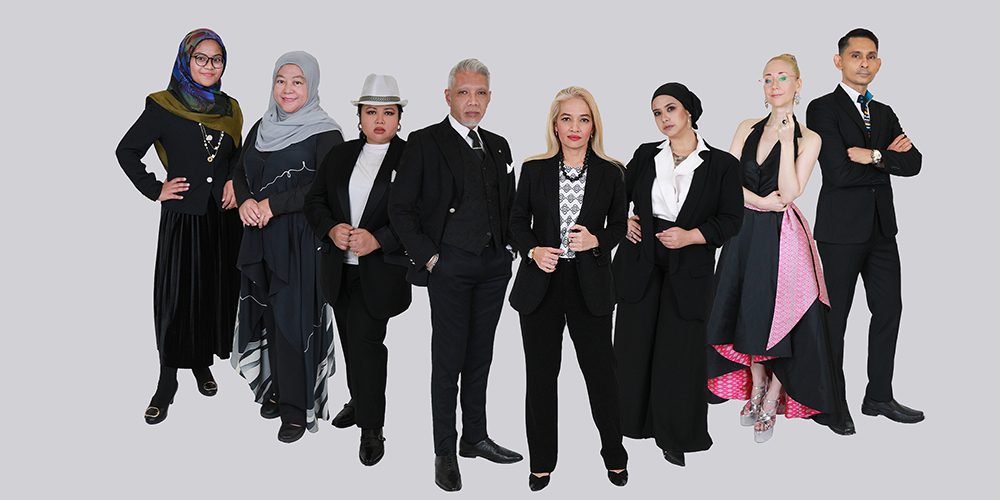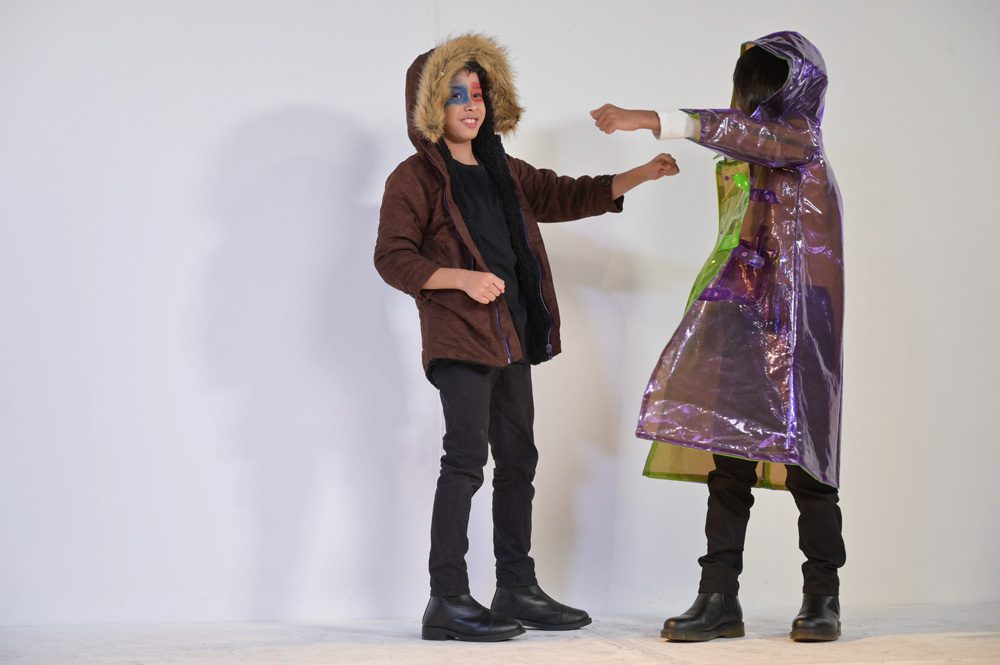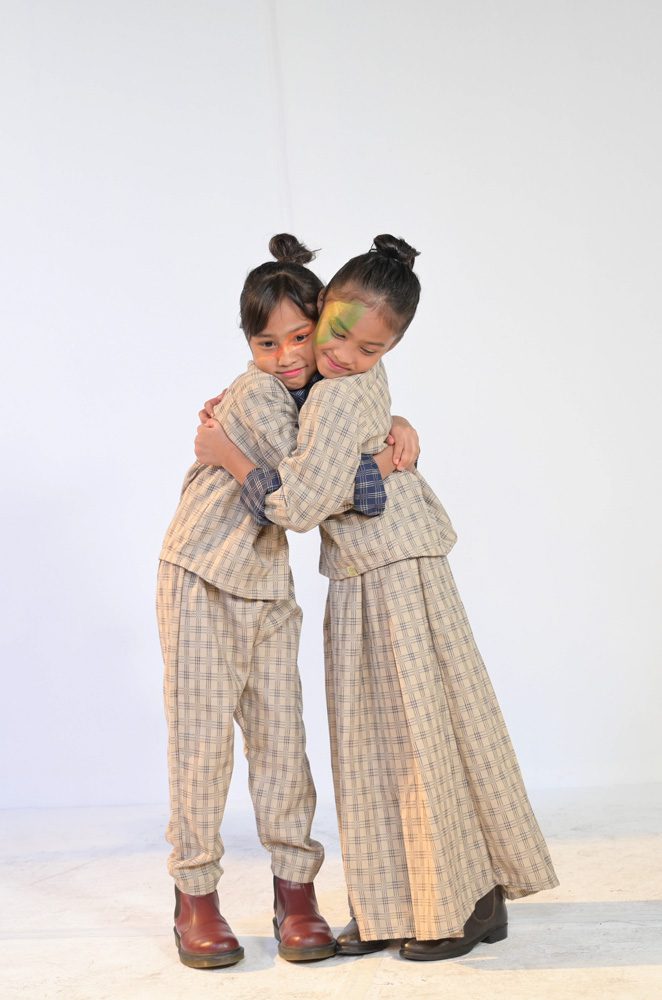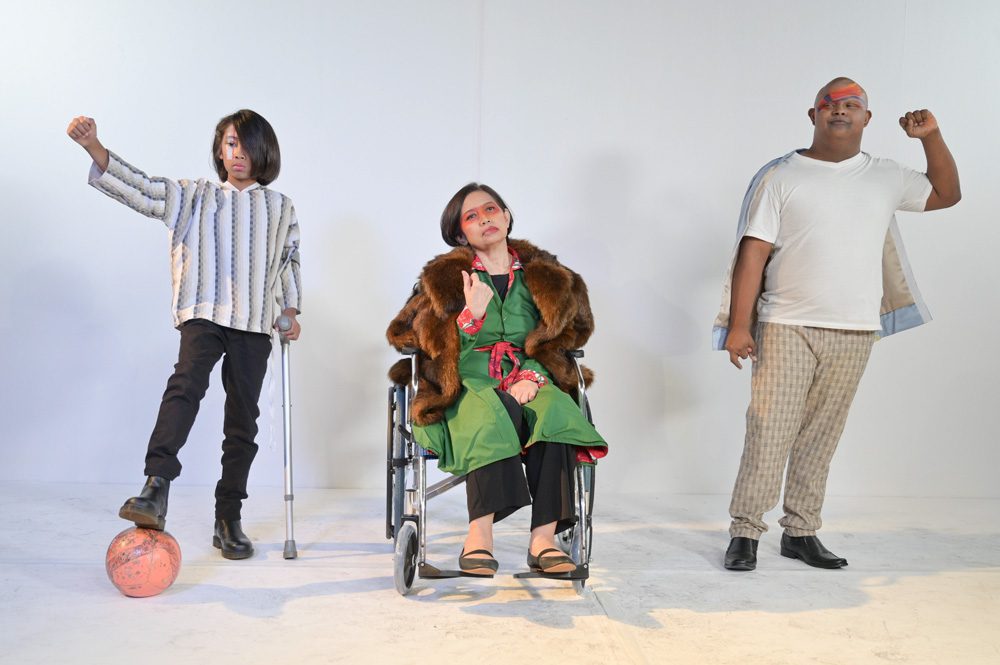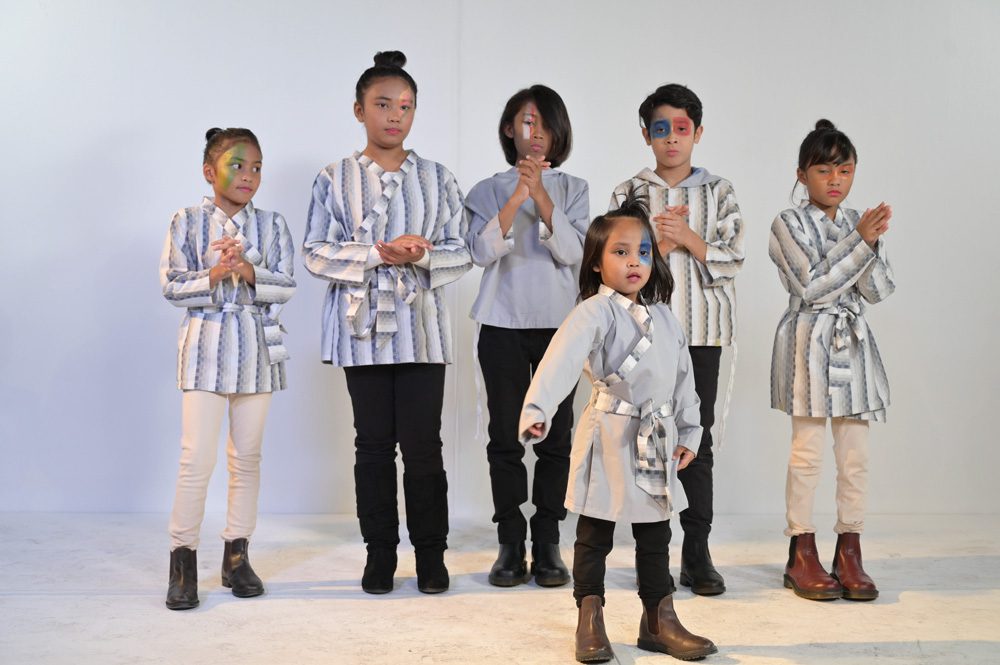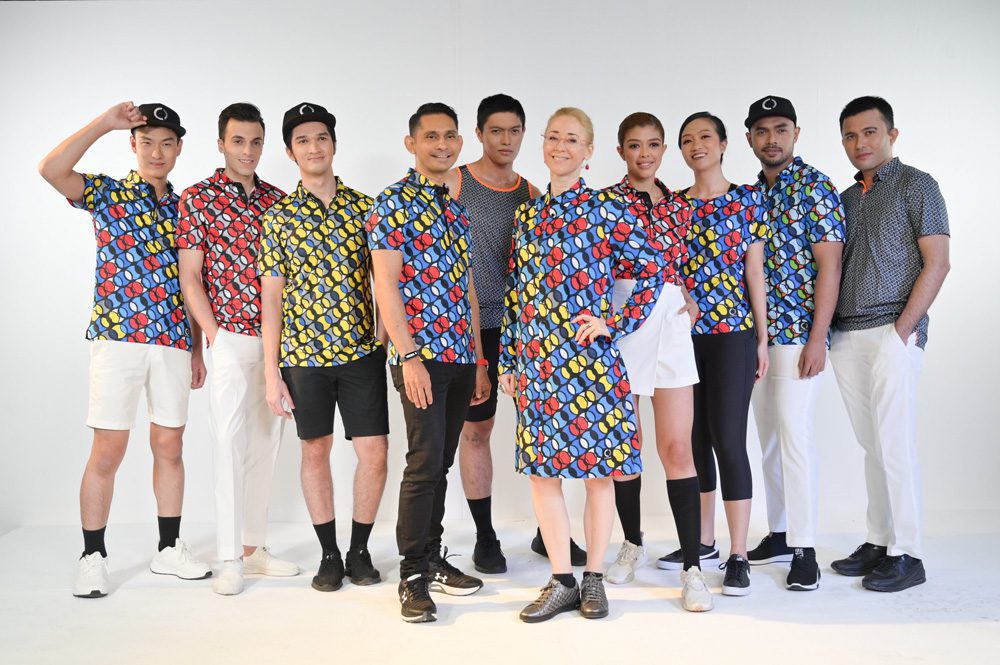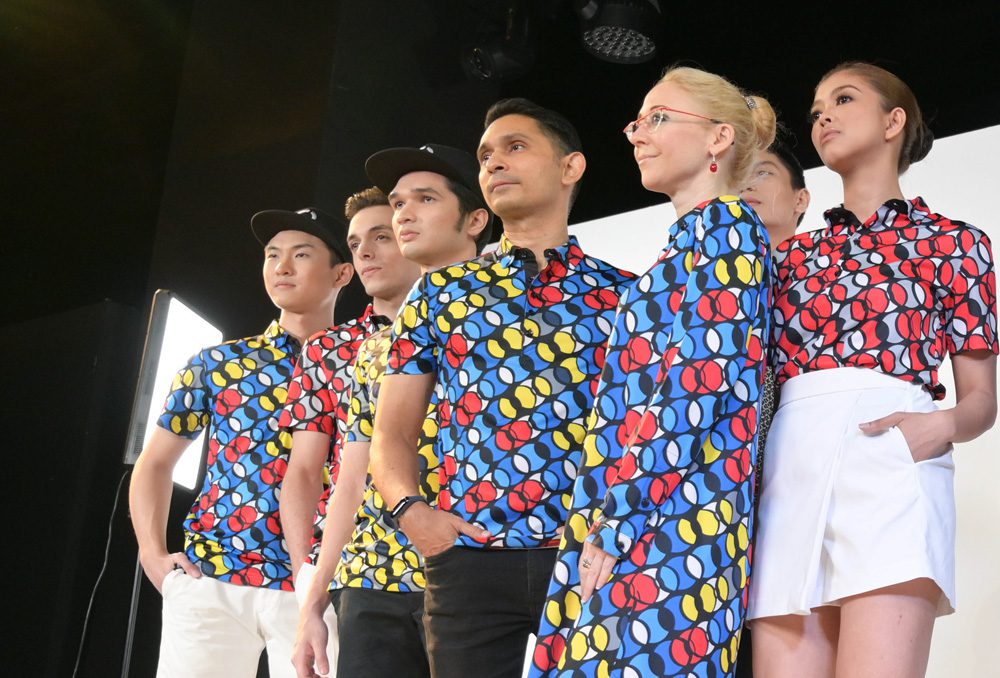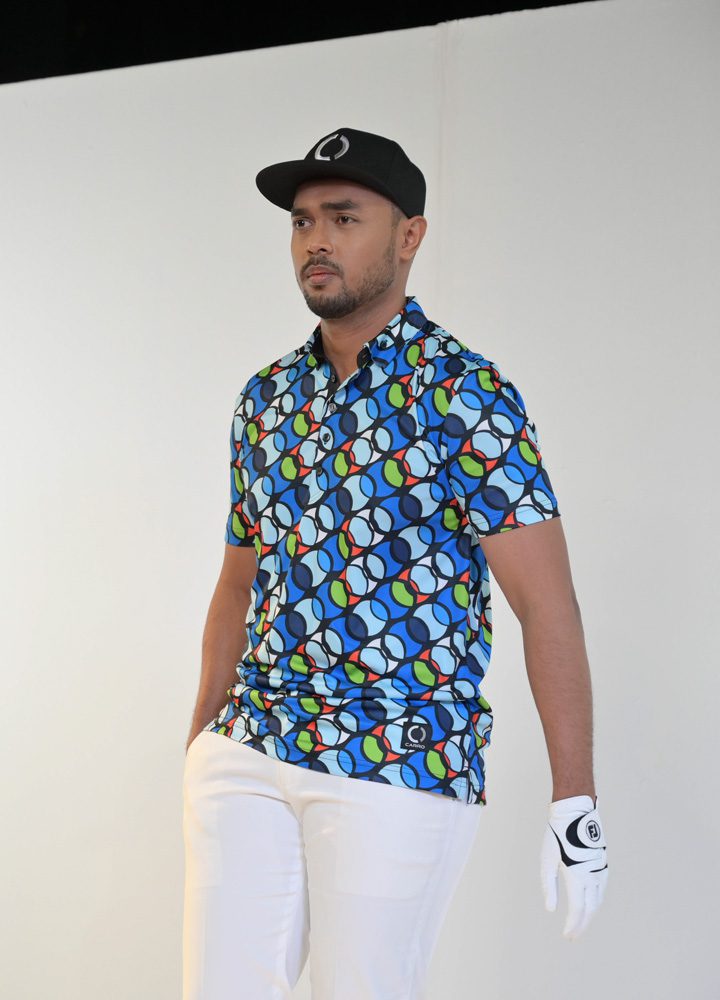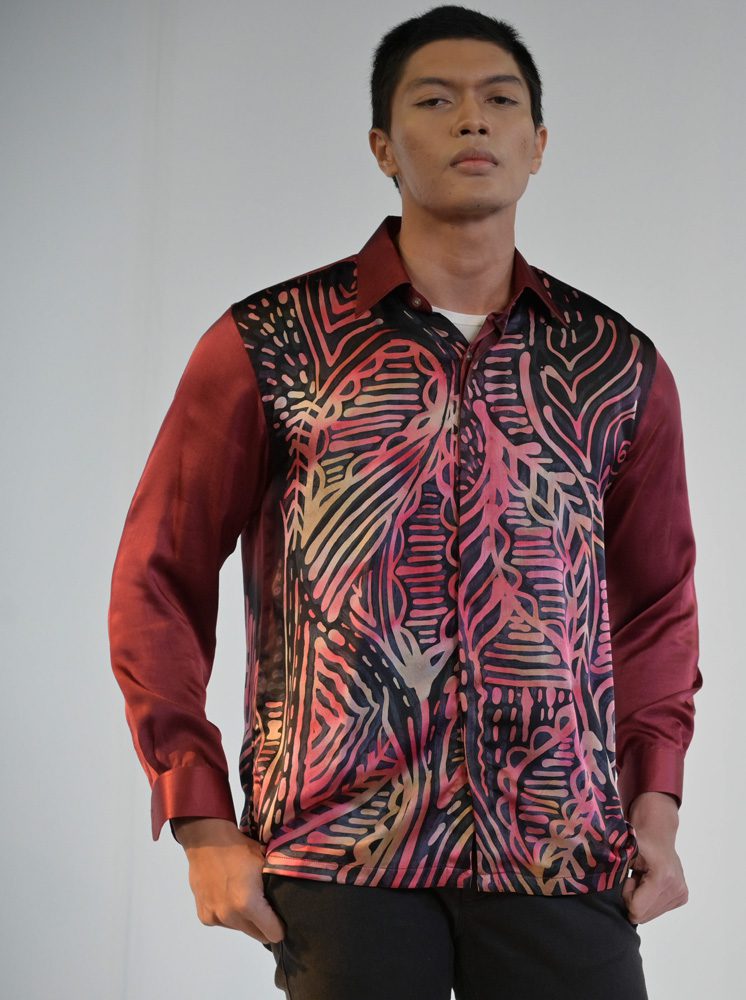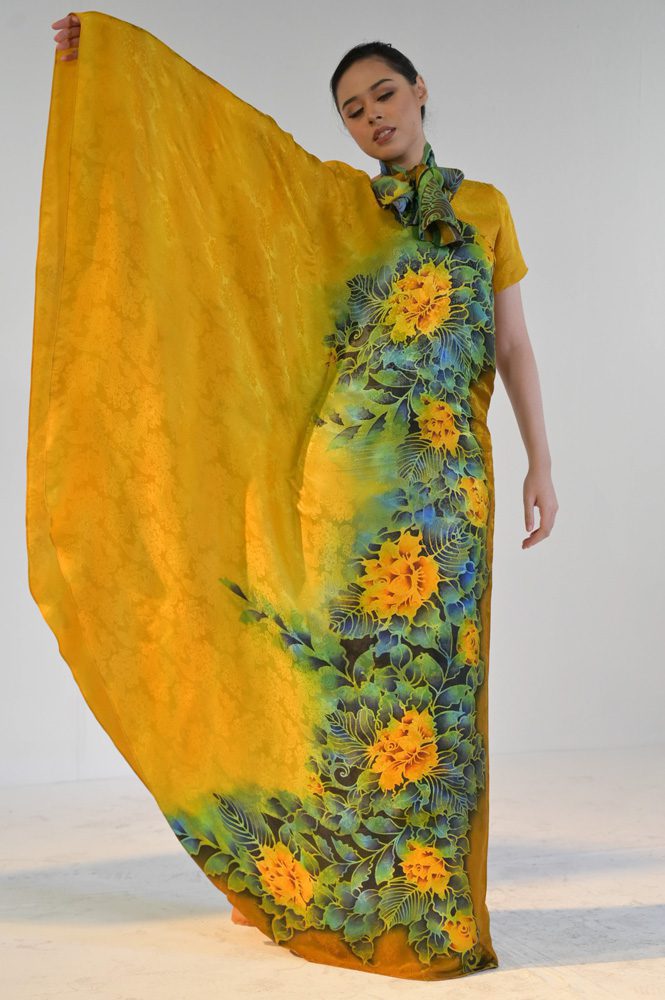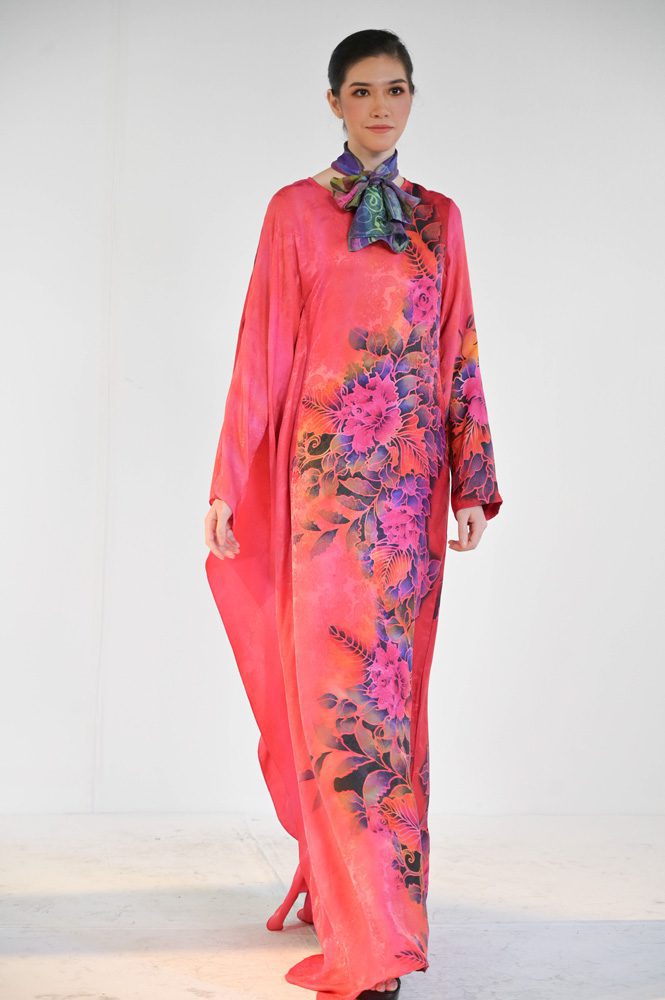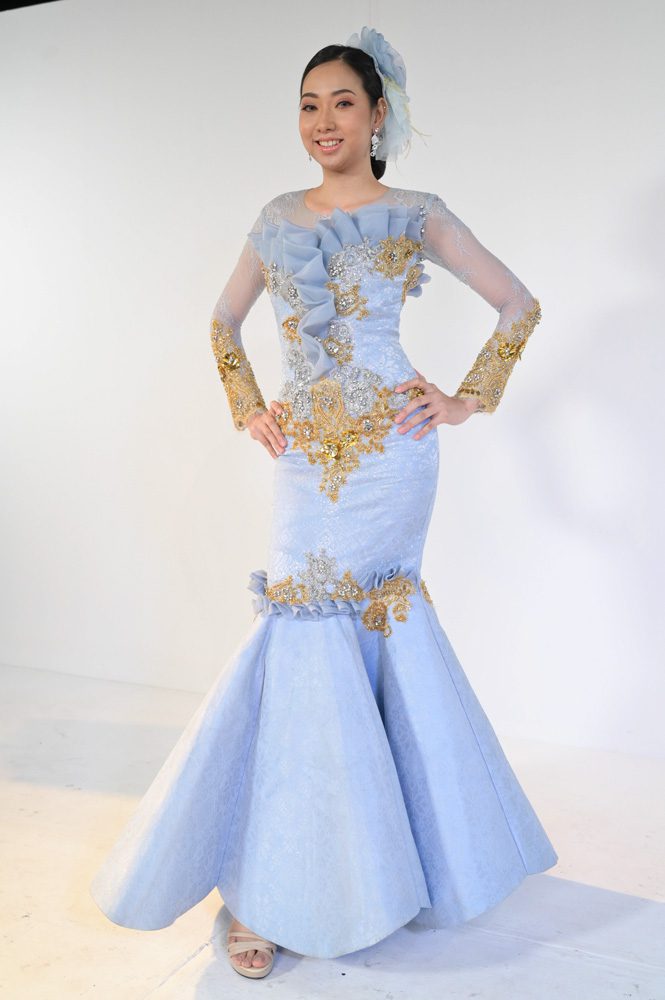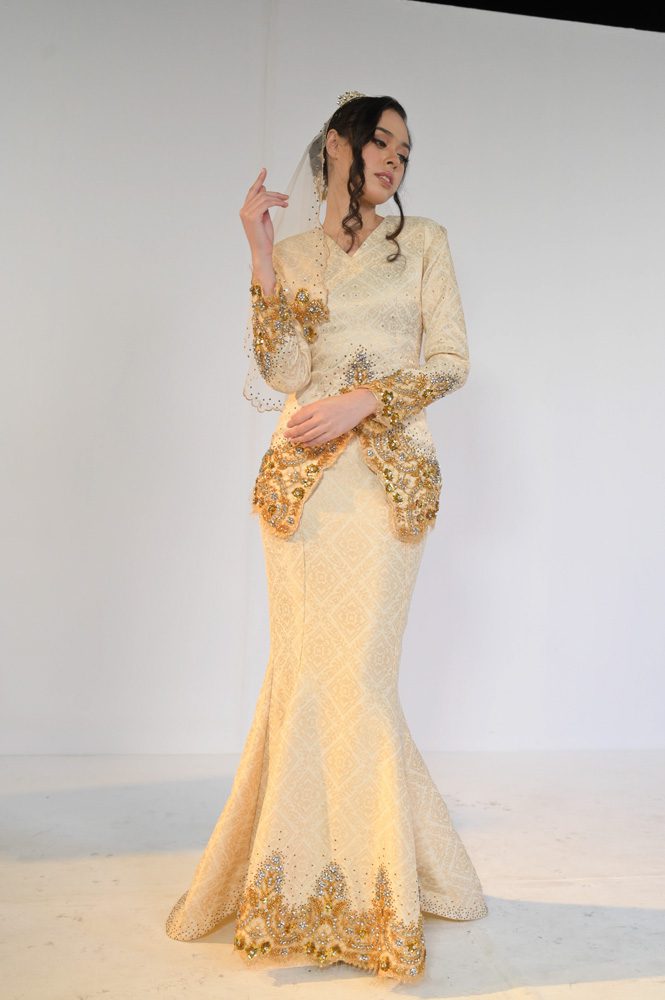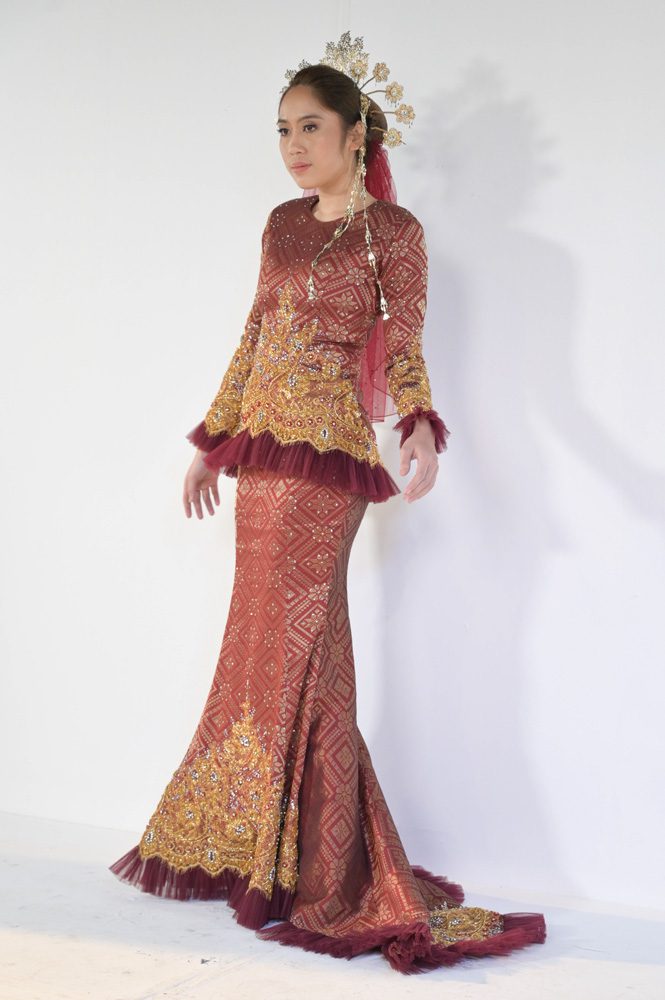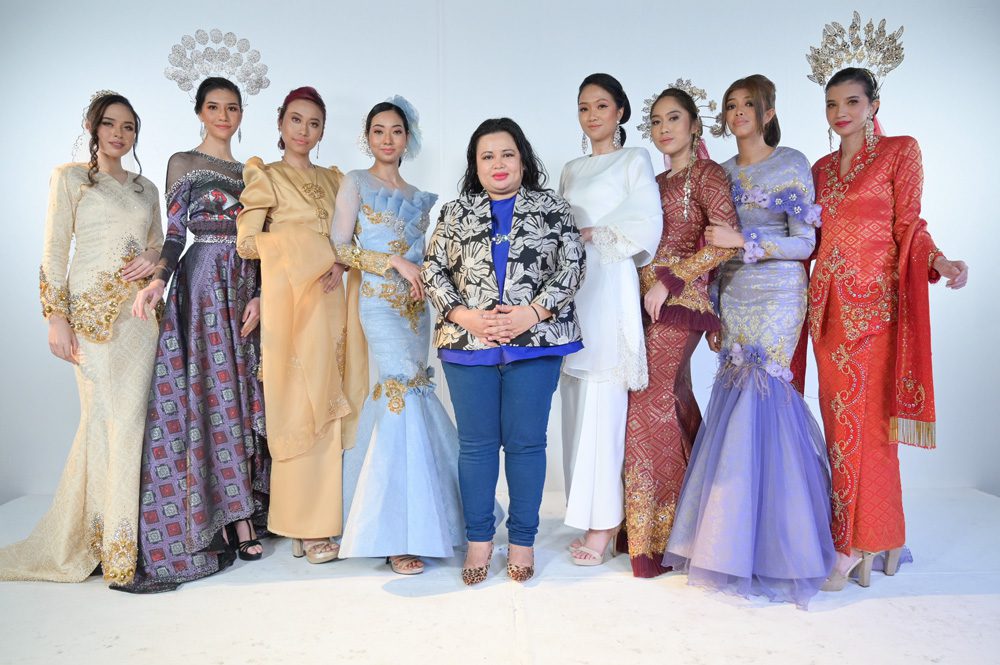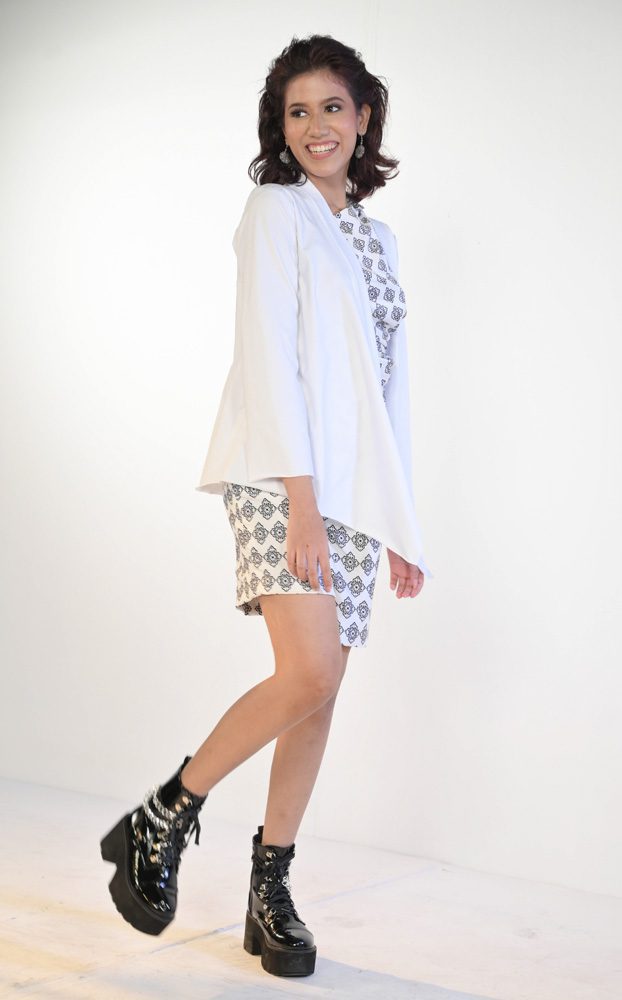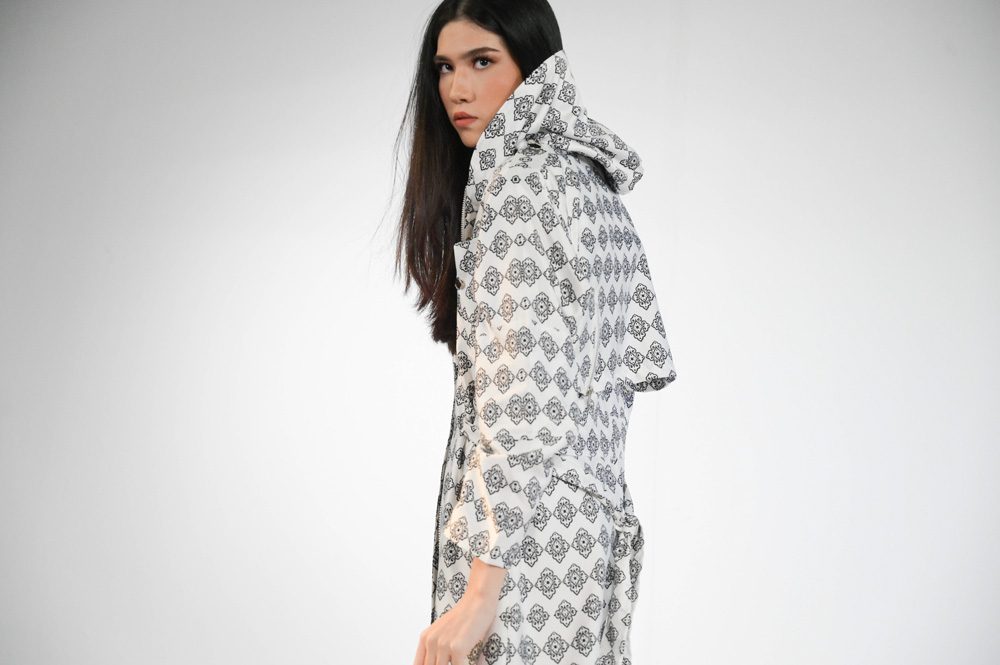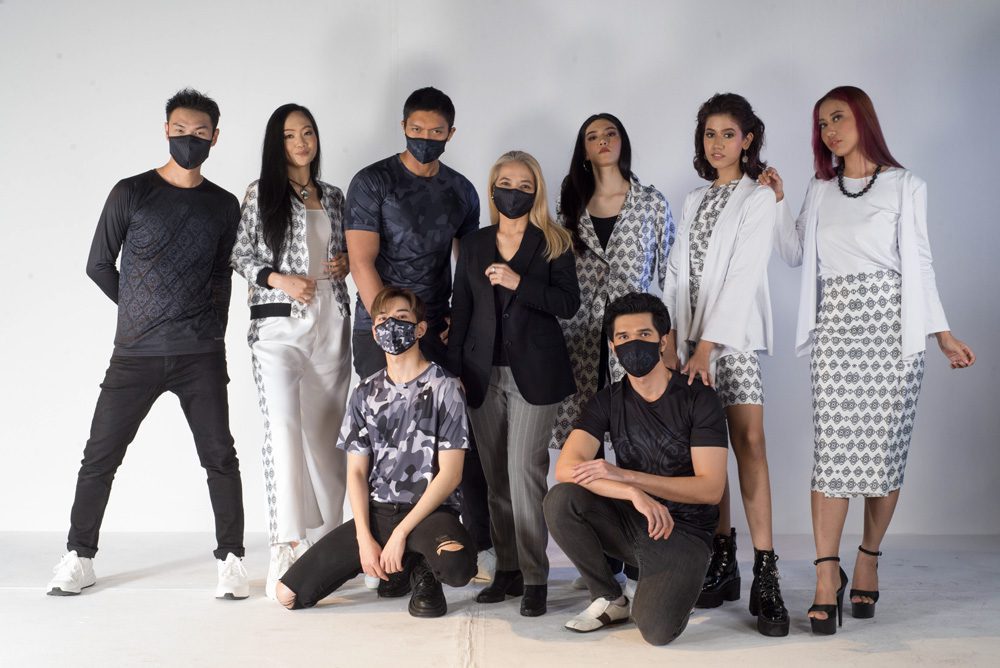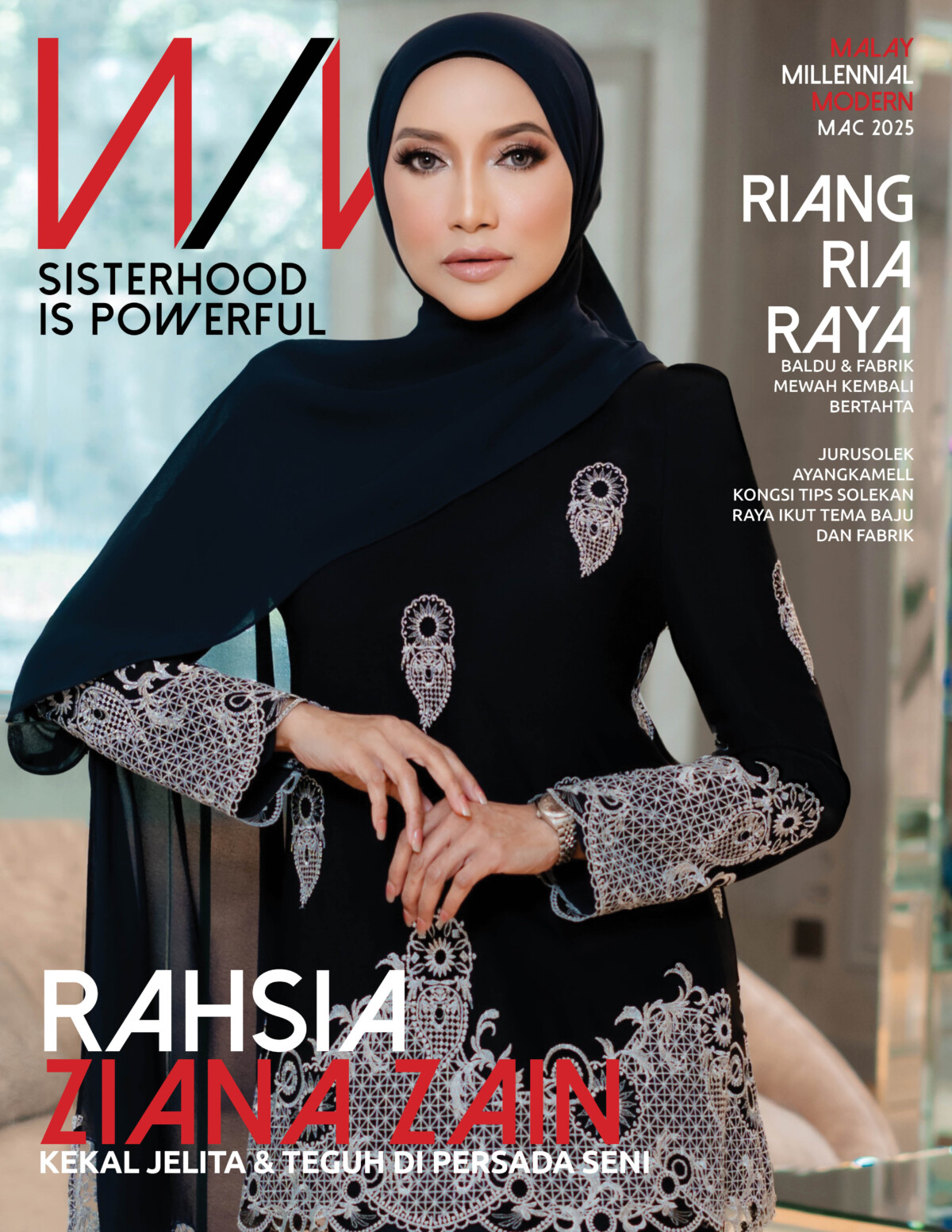All over the world, the fashion and clothing industries are notable for their interdependence, their sharing of information, and their support of each other within their specific areas and borders. In many countries, they work as the catalyst of their industry and for the benefit of the industry’s players.
Some even go beyond and consumer interests are also their concern as they understand how the ecosystem works and of course how important are the consumers for the industry and what industry contributed to the country’s economy.
For most, their professional associations may be divided and activated roughly into a few portfolios and mainly two, which is membership organizations with either individual or corporate members, and trade organizations whose purpose is to further the goals, funding and to enhance the image of the industry as a whole or to boost and protect a particular segment of the industry.
The system had long been an important part of the Industry’s ecosystem, the oldest and most prestigious of the individual member organizations in the world to date is the Fashion Group, founded in 1931. Its catalyst was Vogue's editor-in-chief, Edna Wool-man Chase, who, at the urging of one of her staff, gathered a small group of people who held positions of consequence in the fashion industry and related fields. Aiming to draw membership from several areas, thus they formed an advisory board.
Here in Malaysia, there were a few efforts and moves to push the industry by non-governmental organizations in more or less the same way. The oldest we had was Malaysia Official Designers Association (MODA) formed in the 80s by a few fashion designers and in December 2006 Bumiputra Designer Association were formed by an editor with some designers, makeup artist, and industry’s people of related fields of the time in more or less the similar way the industry had moved Vogue’s editor Edna.
As the editor of the first and most sought-after fashion and lifestyle magazine in Bahasa Malaysia, Mahani Awang saw the needs and the importance to help the budding Bumiputra designers and the fashion people to blend in and share opportunities with the non-bumiputra whom many had made their mark in the industry. The objective of the organization is to promote Malaysian Bumiputra designers and those in related fields and to create a platform for them to promote, display and sell their produce and fashion garments.
Based in Kuala Lumpur, it is associated with other organizations, industry players, and corporate. It was also reputed as a social organization, remaining relatively moderate until 2009 when its mission was expanded to promote its contributions to all Bumiputras in the industry throughout Malaysia.
It again expanded to include education and industry development with collaboration with a few fashion faculties from fashion institutions such as UiTM Johor and Perak, Lim Kok Wing, Politeknik Johor, International Academy of Fashion and Design (IFTC), and many others.
The establishment by then had been noted for its credibility and force in promoting and helping the Bumiputras designers at large and had representatives in other active fashion states in Malaysia such as Johor, Penang, and Pahang.
They defined their mission as a forum in which to exchange information and a force to the fashion people in their emerging role in a much fast-moving and glamorous industry. In the wee hours of their existence, its membership was already made up of both apparel and accessory designers such as shoes and handbags and costume jewelry and textile, namely Bumiputra batik producers and songket weavers.

MBDA sets out to be the catalyst to boost back the fashion industry
In the later years and with new leadership of two most experienced people in the industry, Malaysia Bumiputera Designer Association was officially named with the word Malaysia added to it to boost its image and give it a wider platform nationwide.
Today Malaysian Bumiputra Designer Association led by two important people in the Malaysian fashion industry; Bon Zainal, a master of Malaysia men’s suit and clothing for more than two decades and Rasta Rashid, The Queen of Batik, who champions batik in her designs and work, is the current President/co-founder. They have done tremendously well for the industry while Mahani Awang and Bon Zainal remain as the advisor of the organisation.
Under their leadership MBDA had prospered and became one of the most important fashion organisations at all times in the country and MBDA is signalling to the world that they are here to stay and will become the catalyst for today’s fashion industry and a very important segment of the Malaysian Fashion Ecosystem.
Today MBDA is a governing force that is well trusted and a leader in the industry. It has come to a level that dictates which houses may distinguish themselves with the appellation "haute couture," which means high sewing or high fashion. There is a demanding regimen involved in becoming one of these privileged few and it is important to have an appropriate control over the status.
MBDA rules state that a design house meets these requirements: a house must employ at least twenty employees in its atelier; a designer must present a collection of at least seventy-five designs twice a year. MBDA also has their rules of “Dos & Don’ts” firmly fixed on other mass production labels and cottage industry players under their wing in order to upkeep its image and trust.
Moved by another promotion and directive team and led by non-other than madam president herself and Bon as a director of public relations, they organizes the calendar and venues for the biannual and small shows, provides public relations support, and requires that videos and portions of the collections of the designers are shown in their IGs and FBs or any other social media apps other than those provided by the organisation itself.
MBDA too achieved its mission of gaining worldwide credibility for the industry by arranging participation in big fashion shows around the world and not only focussing on Asian countries but doing a lot of effort in pushing the members creative to world renowned fashion capital such as London, Paris, Milan and New York.
MBDA thrive to bring together fashion brands that foster creation and international development. It seeks to promote the diverse fashion culture and heritage, where they understand that creations have a major impact by combining traditional know-how and contemporary technology at all times. With Malaysia’s diverse and rich heritage the principle applies perfectly well.
Today MBDA provides a single unified voice that champions not only the needs of the Bumiputra members but also the local industry as a whole. Through collaboration with related organisations and related government authorities and leadership, MBDA provides the resources, support and tools to enable our industry to continue to evolve and thrive especially at this trying times due to the pandemic.
The association has a more important role to play as it is the peak body for the Fashion industry. MBDA exists to promote, support and guide the recovery, revival and evolution of a thriving, resilient and inclusive industry and try to help designers and industry players to bounce back after two years of loss.
As a non-profit membership organisation, members are drawn from across the entire fashion ecosystem. Position as a connecting critical industry player across the industry, allows MBDA to effectively champion an innovative, resilient and sustainable legacy for the industry.
Azrene Ahmad
Brand: Three Little Ahmads
Say something about your background?
I am a law graduate with an LLB and Masters in Human Rights Law (LLM) from the University of Nottingham, UK. Upon returning home to Malaysia, I qualified as a Certified Image Consultant and in 2017, attained Certified Image Master status with the Federation of Image Professionals International (FIPI) and City & Guilds, UK. I also hold a Diploma and Advanced Diploma in Image Consulting as well as Vocational Training Management.
Define fashion?
Fashion is fluid and evolves over time according to trends and needs by the consumers. Anything can inspire a fashion creation.
What skills are necessary for a successful fashion designer?
A strong foundation in Colour Analysis, Body/ Figure Challenges, Fabric & Textiles. A strong knowledge in silhouettes, line and design is essential. Creativity and Innovation go a long way but must be balanced with economics, R&D, common sense and figures. Just because something isn’t in the market yet doesn’t mean it needs to be. Just because something is already in the market with stiff competition doesn’t mean it cannot be innovated.
Why did you decide to choose fashion designing as a career? When and how did it all begin?
It started when I was pregnant with my first child and having issues finding good, quality and functional clothing for my child. I put my ideas on the back burner for a very long time. It wasn’t until just before I attended a Conference in Mexico City did I put forward my plans and build my first collection. I was so inspired by Mindy Sheier who was the Keynote Speaker at the Conference where she spoke about inclusivity and designing for the disabled. When I arrived back in Malaysia, I put my collection production on hold to incorporate adaptive designs so that my designs can be worn by both able bodied and disabled children as well.
What are your greatest strengths, as well as tell us about your weaknesses?
My strength can also sometimes be my weakness. I am extremely creative but being an introvert I am extremely shy about my creations and putting myself out there as the Founder of the label.
I’m sure some do buy high end clothes to impress or to try to gain prestige. Please comment.
It is not the clothes that make the man, it is the manners. We see time and time again people splurging on high end items in the hopes of gaining prestige or impressing others but in the end, they are just building a house of cards when it isn’t backed up with the right attitude and etiquette to go with the persona/ avatar that they have created. The true authentic self is always best. Many don’t realise that there are two personality styles in fashion that are quite similar: the Elegant Female/ Elegant Male and the Classic Female/ Male.
The similarity is that the Classic & Elegant personality style are both attracted to simple, clean lines that are minimalist yet fits them as though the item was tailor made for them. The difference is that the Classic will go buy high street items yet come across as though they are wearing something expensive and high end whereas the Elegant personality style will only buy and wear high end designer labels. To be able to pull off the Elegant personality style if this is not your true authentic self takes years and wisdom to master- otherwise they end up looking cheap and come across as lacking in credibility.
It looks beautiful on the catwalk but before it is shown, you must have gone through a tense moment to give birth to a creation?
A lot of people don’t see the struggles a designer goes through to put a collection together and present it on stage. The garment goes through so many stages before it ends up as a beautiful, finished product- even the simplest of garments. So do take time and effort to appreciate a creation and the price tag attached to it. It’s never as simple as it seems.
What do you consider the most important facets of the fashion industry?
Creativity, Sustainability and Inclusivity.
The next 10 years, where do you see yourself?
I would still be designing for able- bodied and disabled children and adults but it is my hope that the principles the label stands for: functionality, inclusivity, sustainability and social enterprise would be intrinsic in our community by then and not just appreciated overseas.
It looks beautiful on the catwalk but before it is shown, you must have gone through a tense moment to give birth to a creation.
It is when I see the smiles on the audience’s faces and that “Eureka” moment they have when inclusivity is demonstrated by the able bodied and disabled are strutting down the runway in equal strength. The thing that always makes me fret or worry is that “okay, now that we’re done here… what’s next?” thought because our schedules are often back to back.
How comfortable are you working with models and other designers?
I wholeheartedly encourage collaboration between designers. The creativity that results is astounding and the knowledge gained is priceless. There is so much that we can gain when we help each other. I am extremely comfortable working with our models but my hope is that more parents and guardians of disabled children would be more open to their children being models as well as opposed to being worried that this is still taboo or that their children will be laughed at as opposed to celebrated for being differently abled.
What is your best show and where and why do you participate in that particular show?
Our best show would be in Malaysia when we showcased our Raya Collection in 2018. We did two rounds at different venues as we could then get concrete, finite evidence that our designs were appreciated. The buying frenzy after those shows was a testament to the support we had gained and was extremely humbling.
I believe, to make it to the fashion industry, it is not that easy. You need to work very hard, and be dedicated, I presume. What are the biggest obstacles and challenges you
went through and how did you manage to overcome them?
For Three Little Ahmads, the biggest challenge is actually overcoming the Malaysian mindset that children’s clothing needs to be cheap. Things are cheap because of the cost of labour where the garment is sent to be produced, the quality of fabric is usually not up to par and these items are usually mass produced - in other words, fast fashion. It’s also a shame that Fashion Weeks in Malaysia are not open to accepting entrants from the childrenswear category.
It has been a continuous exercise of educating the market that children need functional garments made of quality, breathable fabric that lasts, that cost of labour in Malaysia for our clothes are higher because we choose only to work with single mothers, stay at home mothers and Giat Mara graduates who are paid fair wages for their work. Sustainable packaging is also the choice that we made fairly early on which can be costly but is gentler to the environment. There is also the cost of technology that makes our fabric more breathable, soft and breathable at the same time more hygienic and longer lasting. Malaysians are getting there and appreciating where the cost goes and who makes their garments, slowly but surely but we still have a long way to go.
How long does it take you to get to know as it is now and a little bit of your first show experience.
It’s taken us five years to get to where we are today. Our first show was just a private one in a hotel room, with friends who supported us. This was a way to safely test the market as our friends are extremely honest and upfront in their praises and criticisms. It was definitely a learning curve for us.
Many individuals who have no fashion background succeed in making a name for themselves in the fashion world, became famous and rich. Please comment.
At the end of the day, it all boils down to rezeki. If it was meant for them, they would be granted it. There’s no hidden or written rule that barrs a person who doesn’t have a background in fashion from exercising their creativity and making a name in the fashion world. They have their target market and we have ours. If a stakeholder likes or is attracted to a design, it wouldn’t matter to them whether the designer has a fashion background or not. They will still buy it.
What plans do you have for your brand?
We have put into motion regional and international expansion prior to Covid-19. Now that borders are slowly opening up again, we are looking forward to resuming these plans.
And being the members of MBDA do you have any plans for improving the fashion industry?
The way MBDA currently works over the last few years is that there is an ecosystem in place so that all members can help each other in terms of skill, knowledge and services. We are extremely supportive of one another. As a member, I hope to be able to contribute to the ecosystem. My ideas for innovation, use of technology, advocating inclusivity is what I hope to contribute when it comes to improving the current climate within the industry. We can only move forward if we step on the gas pedal but I do also understand that going too fast would also be detrimental in the long run. Steady and stable in pace to avoid the Allegory of the Cave situation.
Describe something that excites you about the fashion industry?
The fact that more and more senior designers are becoming open to mentoring and collaborations, to exploring new ideas, technology, sustainability principles and are more aware of the need for social responsibility and inclusivity.
What software do you use to develop designs?
Adobe is the go-to but we are currently experimenting with a few other softwares newly in the public domain as well. In terms of technology, we have been consistently incorporating nanotechnology into our product offerings.
How do you define your personal style?
I would say I am Elegant, Sporty and Dramatic when it comes to my personality style. Simple yet with subtle nuances of impact.
Finally, My collections are always quite influenced by the ability for children to move comfortably when playing and garment functionality.
________________________________________________________-
Caroline Wass and Mark
Brand: Carro
Say something about your background?

Caroline: I hail from Sweden, fell in love with the colourful and vibrant Malaysia during my first visit, That love grew as I visited my parents who lived here back then when my dad worked here. Amazed at the accessibility of fabric and other supplies, you dream of as a fashion designer, the strategic location in Asia, close to manufacturers, the high living standard and of course all the great delicious food. I made my decisions to move here to study and pursue my dream of being a fashion designer. Upon graduating I came across a great job opportunity that would give me the experience and knowledge that I was seeking.
To my surprise I realised very quick that even I learned so much during my time studying that it is only a small part of what you really need to know working in our industry, so you can not be afraid to roll up your sleeves, put in the hours, and it’s a must to be proactive, learn things quickly and keep up the fast paste of our fashion industry. And most important stay excited and love what you do!
During work my path crossed with Mark. A person with the same energy and passion for fashion – so we hit it off Mark learned fast that I had a sweet spot for coffee and banana leaf food and soon found his way to my heart. When we first got to know each other, Mark had all shades of blue in his wardrobe, which was soon changed after colorful me came into his life.
In 2005 we set out our journey together in the business world. Striving to spread good vibes together with fashionable apparels and service with a smile we started working in the corporate world dressing up companies in designs which back then was only sold in the retail store by brands to individuals.
For many years we have enjoyed the privilege to work with clients ranging from SME’s, MNC’s and GLC’s, local and international, nothing is too big or impossible for the duo to take on. On one of the many projects they delivered to over 17 different countries, over 30,000 apparels.
With time and over many projects they have forged trust and relationships with their clients that last until today. Under the radar, clients will mostly find them by word of mouth or through the liking of their work and designs.
Always striving to push our own boundaries they founded the brand CARRO in 2017.
Starting off with stylish polos since they are so versatile, often overlooked statement pieces in the wardrobe. We set out to change this and to do the polo justice.
Many golfers are today grateful to that as CARRO has added much excitement to their games and life.
Why stop there? That’s when we decided to add activewear to their range of apparels. Since we both love working out and most of the time are wearing workout clothes in our leisure time it made sense to come up with key items which you can wear anytime especially when working out. True to my identity. The patterns are bold and stand out. If you didn’t feel up for a workout before, you definitely will after putting on the apparel!
Define fashion
Instead of letting fashion define you. Let what you wear be an extension of who you are. What you wear, colours & patterns influence you more than most people realise. Colours add energy. Patterns not only spice up your wardrobe but also your life. Keep it fun and exciting and always try out something new. When you feel good, you look good. So what you wear and how you feel are equally as important.
What skills are necessary for a successful fashion designer?
There's many skills, some obvious and some less that you realise over time through trial, errors and through persistence. Creative, having your own unique identity that is clearly recognised in your designs and work, something that stands out from the rest, great visual imagination so that you can see your creations in your mind, understanding garment construction, functionality, materials, colours, patterns, what flatters a body and what is not.
People skills, good at communication, being organised and time management. If you are running your own business it helps to find a balance between being a designer and being an entrepreneur which we fondly call it - fashionpreneur.
Why did you decide to choose fashion designing as a career? When and how did it all begin?
Because of my passion for fashion, clothes, styling, many times I couldn’t find what I wanted, always on a search for something different and unique out of the norm and I also love to make others look great and feel excited about themselves and what they wear.
I have had interest since I started dressing myself. However I was studying something else at first when it got real intense I realised that I was not truly loving what I did and my passion
was in fashion design.
For me, it’s simple, when I love what I do it is no longer work and hours can go by, I forget
space and time. It also brings so much joy and satisfaction.
Once I realised this my mind was made up.
What are your greatest strengths, as well as tell us about your weaknesses?
Skills to combine colours, materials and create pattern, dare to think outside the box and come up with solutions and try out new things. Eye for quality and understanding people what they like and looking for when they don’t even know it themselves.
My weakness is that I’m a time optimist at times, but I am getting better at this. Sometimes I become so engrossed with what I do that I forget about time and space. In the past I used to strive for perfection, however I realised over time that it will only drive me made because nothing will ever be perfect and when time passes by and you look back at your work it looks pretty good and you wonder how come I rejected this and that. Life is so much more enjoyable when you are not too hard on yourself
I’m sure some of you do buy high end clothes to impress or to try to gain prestige. Please comment.
People have a choice. What we wear is an extension of who we are or who we are striving to be. However I believe beauty comes from within, knowing yourself and how capable you are.
It looks beautiful on the catwalk but before it is shown, you must have gone through a tense moment to give birth to a creation.
I fall in love with my designs and creations when I design them, however sometimes I can have butterflies in my stomach before releasing them if maybe this time - did I cross the line and some of them are too crazy. So far they are well received and many of the most striking designs are the most popular.
What do you consider the most important facets of the fashion industry?
Working together and collaborating within the ecosystem. We can do so much more when we work together, we learn, share, develop that we otherwise wouldn’t.
The next 10 years, where do you see yourself?
At international golf tournaments, worn by golf pros and Malaysia’s top 10 activewear brand.
What was the most fun after the fashion show you attended and the one that worried you the most?
Our first fashion show when we launched our brand CARRO is always memorable and most worrying was MFW (Malaysia Fashion Week) 2017.
How comfortable are you working with models and other designers?
Right now, it's very comfortable. At MBDA we work with each other all the time. It's part of our routine.
I believe, to make it to the fashion industry, it is not that easy. You need to work very hard, and be dedicated, I presume. What are the biggest obstacles and challenges you went through and how did you manage to overcome them?
The biggest obstacle we’ve faced so far is finding the right people to partner with. It’s tough to find people who are trustworthy and honest. Over time, some trials and tribulations we have become more business savvy and it’s very It is important to be knowledgeable.
How long did it take you to get to know as it is now and a little bit of your first show experience.
Always learning and evolving as the industry does over time. Especially now during the Covid-19 we are forced to move online and have hybrid online events where some parts are pre-recorded like in this event MY Gaya Month and other live segments (interviews, talks etc). That’s a number of skills to learn along the way, as we progress.
Many individuals who have no fashion background succeed in making a name for themselves in the fashion world and become famous and rich. Please comment.
I think it is very interesting. Designers need to learn what we can do and we will be more successful with our brands. Many times we are very talented in designing but lack the business sense. We need both to thrive in this new era.
What plans do you have for your brand? And being the members of MBDA do you have any plans for improving the fashion industry?
The sky’s the limit with our brand. Being a part of MBDA we plan to do our part in building the fashion industry and contribute to the development of our local fashion industry.
Describe something that excites you about the fashion industry?
That it always evolve and there is always something new to learn and new exciting people to meet. I would be bored to death to do the same thing day in and day out.
How do you define your personal style?
Bright, colorful, bold, expressive, playful – I like to add excitement to my and people's life. With our busy lives we need that!!
Finally, my collections are always quite influenced (please continue) by our surroundings and our life experiences. We find inspiration from everything that we do. This is only possible because we truly love what we do.
_______________________________________________________
Masrina Abdullah/Mayamin Azlan
Brand: Masterpiece By Masrina Abdullah

Say something about your background?
MASTERPIECE BY MASRINA ABDULLAH is a brainchild of two individuals, Masrina Abdullah and Mayamin Azlan, a mother and daughter duo. We aspire to capture the interest of batik lovers and appreciators both on the local and international scenes. Masrina Abdullah, The Inaugural Winner of Piala Seri Endon and the recipient of seal of excellence award for handicraft product UNESCO AHPADHA (Bangkok) is a batik and fashion designer, while Mayamin Azlan is a batik/graphic designer and a fashion stylist.
Focusing on elegant simplicity, flowy & comfy patterns, the brand is making its debut both as RTW and customized state of the art collections. The designers progressively create their collections from the earliest as applying the first dot of wax on a plain white fabric to intricately maneuver the lines as far as the heart could feel and to be as thorough as the fingers could carry it through. Not limiting the source of the inspiration to the static norms, we explore to an endless horizon of the richness of Malaysian elements comprising of flora & fauna, breathtaking sceneries, its rich history and ethnical motifs, experiences from reads & travels abroad to as far as utilizing the symbolic thoughts of designer's philosophy tactfully translated into the abstract art of batik. Working primarily in batik chanting and batik block method, each piece is individually crafted to be an intrinsically exclusive original handmade Malaysian batik. No matter how simple or how elaborate the workmanship is, its original purity manifests itself as truly a masterpiece. It’s the new era in batik.
Define fashion.
Fashion is a designer's self-expression of style and trend at a particular period and place and in a specific context, of clothing, footwear, lifestyle, accessories, makeup, hairstyle, and mobility of body characteristics. The term implies a look defined by the fashion industry as that which is trending at a given time or a designer's approach to trendset a new style at a specific time and become trending.
What skills are necessary for a successful fashion designer?
Product knowledge of the specific field that they are in and acquired skill to master the creativity and production process of fashion.
Why did you decide to choose fashion designing as a career? When and how did it all begin?
Initially I was a batik designer and did loose pieces fashion accessories such as, scarves, shawls, stoles, sash, pareos and simple caftans. From there the creativite energy developed to become a full fledged fashion designer circa mid 1990's to 2000. I saw an opportunity to combine a love story between batik and fashion designing could lead to a very romantic journey.
With a natural talent of free hand figure sketching that was polished since childhood, fashion designing takes a toll with special attention to batik motif placements while acquiring the technical skill of drawing pattern, cutting and sewing etc. Being self taught in both fields I track the ways relying very much on personal discipline and philosophy.
What are your greatest strengths, as well as, tell us about your weaknesses?
My greatest strength is to incorporate my batik motifs into fashion designing, a process where we think and plan our pattern beforehand. With this process doing our batik pieces becomes easy and well planned to get a desired result. In collaboration with my partner Mayamin Azlan since 2016 who is a graphic designer, we can express our planned creations as sketches and digital drawings on paper before actualizing it on fabric and making it into clothing. Our weakness is the lack of well-trained skill workers in batik making, thus we have to put certain limitations to production aspects.
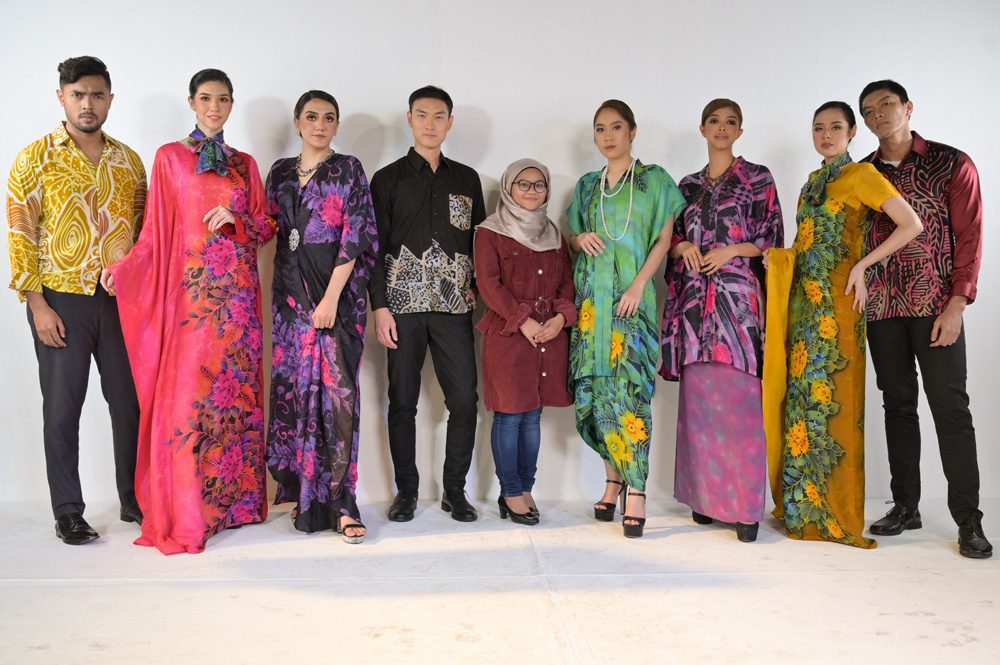
I’m sure some do buy high end clothes to impress or try to gain prestige. Please comment.
Our view on this is a positive one. We do believe high fashion does bring the impression of prestige. While the prestigious people wear high fashion naturally, those who want to be there can start with high fashion as they climb the ladder of social status.
It looks beautiful on the catwalk but before it is shown, you must have gone through a tense moment to give birth to a creation.
On stage we have to make it look outrageous and smooth sailing. The whole creative process begins from the moment we start planning our creations, goes to batik making, cutting, stitching, embellishing and all the extra details of deciding to choose the hairstyle, shoes, makeup, music and the final mobility characteristics to be expressed by the model at a certainly given time frame. Many times we have to work under chaotic circumstances to actualize a successful show.
What do you consider the most important facets of the fashion industry?
Creativity and sellability.
The next 10 years, where do you see yourself?
Our brand Masterpiece by Masrina Abdullah became a well known brand both for our customized exclusive and RTW collection locally and abroad.
What was the most fun after the fashion show you attended and the one that worried you the most?
Of course the best thing in every fashion show is to be well accepted, have people calling out our name when we appear for our finale, remarkable media reviews and receive a lot of inquiries to buy.The most scary outcome is to have a not successful show and a negative media report.
How comfortable are you working with models and other designers?
We always work professionally and have a very good working relationship with models and other designers.
Your best show?
My best show is PSE GUEST DESIGNERS SHOWCASE 2004 in Shangri La Hotel. It was my first appearance as a guest designer after winning THE INAUGURAL WINNER OF PIALA SERI ENDON 2003, alongside with the country's top fashion designers. During the show I made the first appearance of my newly developed batik technique THE CAMOUFLAGE. The technique is still very popularly accepted and adapted into various combinations of motifs.
I believe, to make it to the fashion industry, it is not that easy. You need to work very hard, and be dedicated, I presume. What are the biggest obstacles and challenges you went through and how did you manage to overcome them?
To make it in the fashion industry is very challenging. It is hard work, perseverance and dedication that make us through. The obstacles in the production process, copycat, economic slowdown and unhealthy competition is a very common problem. It's our resilience and the ability to work professionally that help us survive and remain intact in the long run. At the same time to keep the passion and prayers at all times.
How long did it take you to get to know as it is now, and a little bit of your first show experience?
Carrying a brand name is a continuous process and still building. I have been in the fashion industry for almost 30 years.
Many individuals who have no fashion background succeed in making a name for themselves in the fashion world, become famous and rich. Please comment.
What you need to become a successful fashion designer is to have the knowledge. Meaning to be able to design and to acquire the designing and production skill. With that you can make a collection that is well accepted and make a name for yourselves, thus leading to sales. Even if you don't have a formal background in fashion, as long as you have the passion and the willingness to learn along the way, become a trendsetter and keep the perseverance, you definitely can do it. I am one of the living proof but I definitely have to work extra hard to make it happen.
What plans do you have for your brand? And being the members of MBDA do you have any plans for improving the fashion industry?
We are planning to strengthen our brand to a wider market and continue to create and trendset unique items both for the local and export market.
As a member of MBDA we also aspire to share our knowledge with the whole fashion industry and together we bring the industry to greater heights.
Describe something that excites you about the fashion industry?
Fashion industry is where you consistently create and see others create something new. When it comes to competition, It is a challenging field, yet it excites me all the time to compete healthily and try to be the best of what we are doing in a very positive manner.
What software do you use to develop designs?
Software that we commonly use are Adobe illustrator, studio, VN and Adobe photoshop.
How do you define your personal style?
Our forte is our *exclusive double layer and our Camouflage* batik technique with comfy flowy wearables. Our collections are always influenced by the current issues that touch our mind and soul, translated into the art of batik. Transformed into fashionable wearables and we call it *THE NEW ERA IN BATIK*
_________________________________________________________________________
Huda Hassan
Brand: Huda Hassan Kuala Lumpur
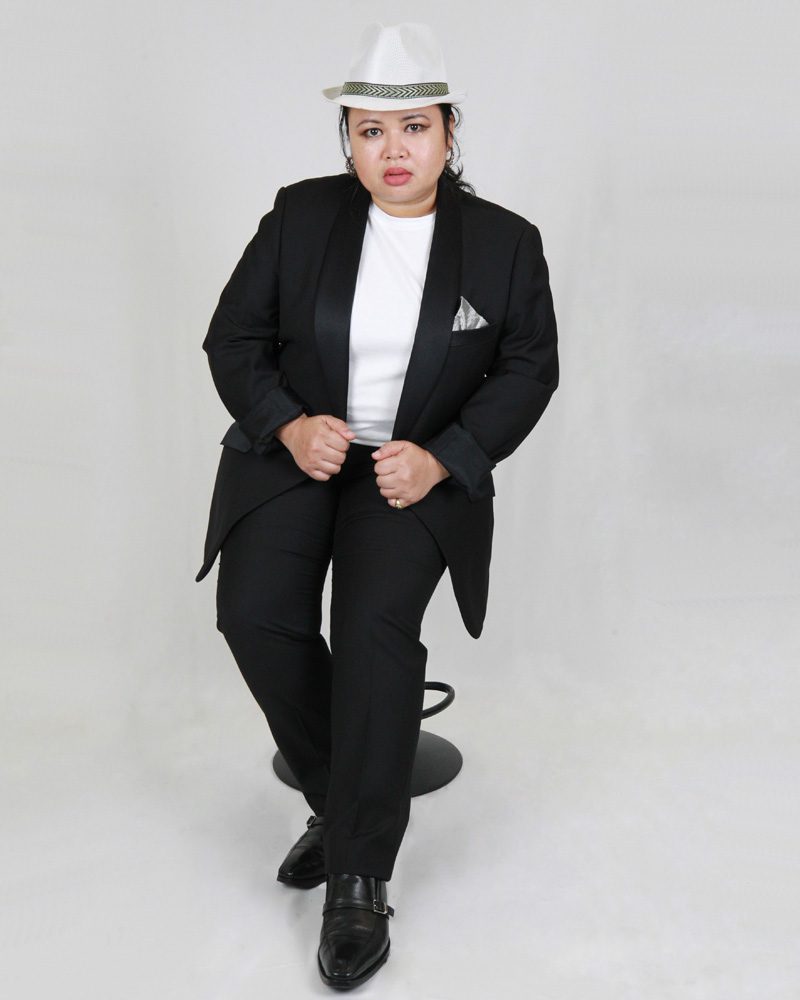
Say something about your background?
I am Huda Hassan from Batu Pahat, Johor and the Creative Director for Huda Hassan Kuala Lumpur.
Define fashion.
Fashion to me is self-expression. It is about how you want others to identify yourself.
What skills are necessary for a successful fashion designer?
Sketching, pattern drafting, sewing, detailed work and styling.
Why did you decide to choose fashion designing as a career? When and how did it all begin?
It was the year 1998 and I had finished my Sijil Pelajaran Malaysia. I was doing nothing then, thus I constantly played with my mom's old antique Singer machine. I was doing some patchwork and curtains, so one day my mom asked me to learn sewing, (making clothes), I reluctantly went. And the first assignment was to make a blouse, and a short pants. I finished the outfit, put it on and was amazed that I could make something that I can put on. From that moment, I have been sewing till today.
What are your greatest strengths, as well as, tell us about your weaknesses?
My strength is my eye for detailing and my weakness is thinking too much.
I’m sure some do buy high end clothes to impress or to try to gain prestige. Please comment.
I bought some of it just to have the value that comes from the high end brand. It's as if you place yourself at a certain level.
Your challenge in your routine work?
Every collection is different and creates different kinds of challenges. Running here and there to source for my raw materials, finishing every garment and hunting for the right accessory, coordinating hair and makeup styling is enough to stress you. But the finishing touches and the end product is a reward well worth.
What do you consider the most important facets of the fashion industry?
To me the most important facets of the fashion industry is the work and support system that involves many people who work in this industry.
The next 10 years, where do you see yourself?
In 10 years to come I see myself being a sought after household name in Malaysia, Singapore, and many countries.
What was the most fun after the fashion show you attended and the one that worried you the most?
The most fulfilling when you know that the collection is up to your expectation. The worst can be when you pieces disfunction. Something like the zipper gives away, the clothes can't fit the models and there weren't enough accessories to go around. And the most scary part for me will be wpoul
Dan yang mendebarkan ialah menunggu apa yang akan dibicarakan di media sosial dan juga di akhbar mahupun majalah mengenai koleksi saya. Kalau semua baik-baik sudah pastinya semangat kita lagi meninggi. Namun jika dikritik, ia juga sebagai perangsang untuk terus memperbaiki koleksi. Memang pun setiap pereka akan terus berkarya dan memajukan diri dari hari ke hari.
How comfortable are you working with models and other designers?
I am easy going and I’m always positive in my approach towards work and people that I work with. I think that is the reason why I’m comfortable working with everyone, models or designers.
I believe, to make it to the fashion industry, it is not that easy. You need to work very hard, and be dedicated, I presume. What are the biggest obstacles and challenges you went through and how did you manage to overcome them?
Cabaran terbesar adalah masalah pusingan modal dan marketing untuk menembus sesuatu target pasaran. Setakat ini, dengan sokongan daripada pelanggan setia serta ahli keluarga saya berjaya melalui sedikit demi sedikit halangan yang ada.
Your best show?
My best show was My Gaya Showcase because I did my best to portray my niche. And why did I participate, it is because I know that I need to let people see my creations.
Berapa lama mengambil masa untuk mencipta nama, dan pengalaman pertunjukan pertama anda?
Saya adalah late bloomer. Saya mengambil masa lebih 10 tahun untuk dikenali dan show pertama saya adalah digital Fashion Flair 2021.
Many individuals who have no fashion background succeed in making a name for themselves in the fashion world, become famous and rich. Please comment.
Mereka adalah fashionpreneur. Mereka bijak dalam strategi marketing dan target pelanggan, tidak salah mereka menjadi terkenal dan kaya raya atas usaha keras mereka.
What plans do you have for your brand? And being the members of MBDA do you have any plans for improving the fashion industry?
My plan is for my brand to reach my target consumer all over Malaysia, let it be retail or online store. My plan for this industry is to create Malaysian based ideas to be presented at International level.
Describe something that excites you about the fashion industry?
What excites me is that in fashion you can be anyone, you can play with any character. Fashion can transform you in a matter of minutes.
What software do you use to develop designs?
I sketch my design on paper with pencil and watercolor. I don't use any software.
How do you define your personal style?
My personal style is like a chameleon, I can be anything. Mostly, I am comfortable in jeans and a top. I use all colors, dark, bright, printed, muted. I think everything has its beauty.
Our collections are always influenced by our tradition, or by a Parisian Couture houses.
_________________________________________________________________________
Bon Zainal Harun
Brand: Bon Zainal
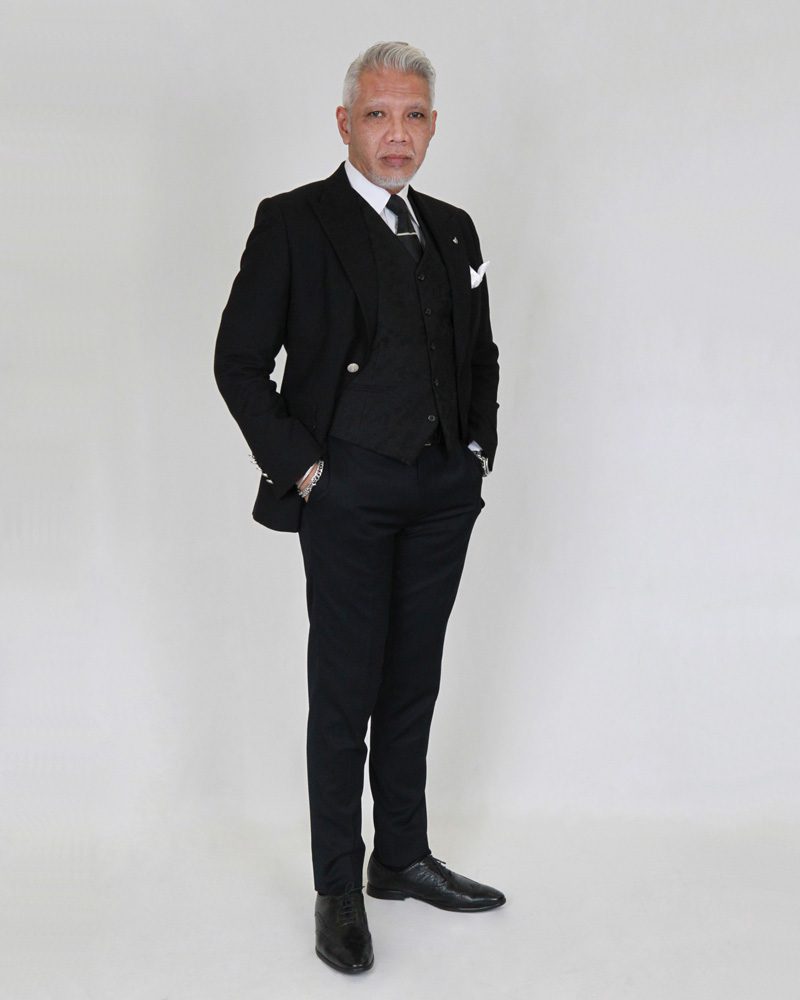
Say something about your background?
Real name according to IC is Bon Zainal but a lot of people actually think it is my “glamour name”. But when it comes to having your name there in fashion, you carry it with pride and work a thousand times harder to protect the brand name, reputation and product.
Define fashion.
Fashion is a way of life. It’s how we present ourselves, express our individuality and how we brand ourselves using specific targeted items.
What are the skills necessary to be a fashion designer?
First and foremost it is all about passion- that must be there. Secondly, knowledge and skill- you need to do your homework, your R & D, your target market. Decide on your DNA. Lastly it is about you because people need to see the person behind the label and whether they represent the person well. You are your own brand’s top gear marketing tool.
Why did you decide to choose fashion designing as a career? When and how did it all begin?
Since I was in primary school and even before that my late father used to buy books from Britannica and how to DIY. So I was exposed to creativity from a very young age. At the same time, my grandmother was a tailor using batik fabric as a medium and hand embroiderer. School teachers would ask me to design sports attire and creative items for school - that responsibility somehow always fell to me. So all this ultimately shaped my journey into fashion.
Two years after my SPM, I left for LA to pursue my studies in Fashion Marketing. This was where the fashion lifestyle began- staying in Hollywood and working in Beverly Hills, you automatically become exposed to creativity, art and entertainment. I returned in 1990 and I began my career in Sparkmanshop which was the biggest suiting and tailoring chain in Malaysia. I learnt my trade there, especially about Malaysian tastes. I would combine a taste of Malaysia with the Hollywood glamour.
In 1995 I left Sparksmanshop and started Bon Fashion Legacy and I was fortunate to have so much support from previous clients and my designs quickly gained traction with new clientele. This was at a time when there was a Menswear Atelier specifically catering to gentleman’s clothing. Of course I received plenty of criticism that menswear is easy and a copout but I never let that bother me, preferring to concentrate on the support of those who believed in what I was trying to achieve. This year would be 26 years that I have spearheaded the menswear genre in the industry.
What are your greatest strengths, as well as tell us about your weaknesses?
I am always a go-getter. I never leave anything too long and to chance. If the opportunity presents itself, I will always grab it. This would also be my weakness because in my haste to charge, there are so many things that fall along the way. But by being this way I have learnt over the years how to balance my weakness and play to my strength. That means I am less gullible these days.
I’m sure some do buy high end clothes to impress or to try to gain prestige. Pls comment.
If you have deep pockets and can afford it, why not enjoy what high end has to offer and enjoy the moment of luxury. I do invest in certain items such as a good quality watch and shoes because these are essential long term items. A good watch is always an investment, just as a good pair of shoes are a good long term investment for my feet which carry me to and fro as I meet my clients and spend long hours in the factory. Not to gain prestige because how long can you pull the wool over someone’s eyes?
Nampak indah di pentas peragaan tetapi sebelum diperagakan, anda pasti melalui saat tegang untuk melahirkan sebuah creation… ceritakan
On my side it has always faced something different because my designs have always been based on practicality and wearability. In fact, during my shows if I were to put in 24 pcs of creations, mostly more than half would already have been booked or sold before they even make it on the runway. To me that is the beauty of fashion - it all boils down to simple economics. “If you want to have fun, you gotta have funds”. That’s why after the show I may be tired but I am always smiling because I know at the end of the day, the money is secured.
What do you consider the most important facets of the fashion industry?
It is all about being responsible and taking ownership over what you are putting out to the mass public. To get the public to understand your brand DNA is a continuous work, and there is an art to it!
The next 10 years, where do you see yourself?
I’ll be “re-tyring”. Bon has a new set of wheels to take over the legacy by training my two daughters to take the helm. By then, I’ll just be advising and cheering them on with pride.
Apa yang paling menyeronokkan selepas pertunjukan fashion yang anda sertai dan yang paling membimbangkan anda?
I’m excited when the whole collection is sold. I’m worried that I always have high hopes that people would enjoy the show and love my collection.
How comfortable are you working with models and other designers?
I think it is part of the whole industry process. Designers work hand in hand with models, hair stylists, and makeup artists. This is where humility comes into play. They must understand your concept and be able to convey this to them in a respectable manner. I’m a mentor; at the end of the day I am happy when I develop a new up coming designer and they achieve success. Collaboration is something that I always encourage amongst designers.
What is your best show and where and why do you participate in that particular show?
My best show was three shows in Paris for three consecutive years. Paris has a plethora of lifestyle and fashion tastes. It was a chance for me to showcase that even menswear can incorporate other fabric and textiles such as batik, songket, tenun, Chinese silk and even sari. It is possible and I showed them that it was possible. We received positive reviews and feedback from Paris.
I believe, to make it to the fashion industry, it is not that easy. You need to work very hard, and be dedicated, I presume. What are the biggest obstacles and challenges youwent through and how did you manage to overcome them?
You need to work hard. Fashion has a lot of unglamourous work behind the scenes plus you need to give your heart and soul into it. Fashion is about feeling and emotion, and about creating egos/avatars. You have to understand this and be willing to get your hands dirty, be willing to grit your teeth and be tenacious. Tebalkan muka sikit… it will all pay off in the long run.
Sambungan soalan 13, berapa lama anda mengambil masa untuk dikenali seperti sekarang dan sedikit pengalaman show pertama anda.
Having been in business for the past 26 years, people come and go; fashion changes and evolves. You have to be prepared to introduce yourself time and time again at all times.
Ramai juga individu yang tidak ada background fesyen berjaya mencipta nama dalam dunia fesyen, dan menjadi terkenal dan kaya raya. Please comment.
Well, this is a new world order where social media and influence plays a bigger role. This is okay but whoever it is that seeks to enter this world must understand that they need to respect the industry players and be ethical.
What plans do you have for your brand? And being the members of MBDA do you have any plans for improving the fashion industry?
For my brand in 2022, there will be a new “Re-Bon” Philosophy. In which, the new product will be towards everyday wear, leisurewear and basics. Since now I have been immersed in health and fitness, you can see this reflected in my collection which is available in the market now. Being one of the Founding Members of MBDA, it is my task to mentor the younger ones, to guide them and figure out ways and opportunities that would not usually be obvious to them. At the same time, this has to coincide with the protection of the MBDA's good name and reputation not just in Malaysia but globally. We can see this from the designers that we send out for expo participation abroad.
Describe something that excites you about the fashion industry?
This is the only industry where you can look good, feel good, be invited to certain events and platforms, people want to rub shoulders with you and the chance to interact with celebrities and personalities by dressing them up. At the same time, you can make money out of it. No other industry allows you to do this in such a creative fashion.
What software do you use to develop designs?
Adobe Illustrator but we also have to understand that in Malaysia most cutters and sewers are still using the traditional methods of craft.
How do you define your personal style?
Elegant with a touch of dramatic creativity. I strongly believe in proper dressing.
Finally, your collections are always quite influenced by…..
I’m always inspired by people and their lifestyle in general so I can design collections that are glamorous and luxurious yet wearable and practical. I always take my responsibility to make my clients look as good and presentable as they can be.
___________________________________________________________________________
Rasta Rashid
Brand: Batek By Rasta Rashid

Say something about your background?
I am Rasta Rashid, was born in Kuantan, Pahang and married with two lovely daughters aged 18 and 14 years old. Graduated in Fashion Designing and Dressmaking (IFTC). I have been involved in the fashion industry for 23 years now in various roles from batik designer to ballet costume designer to fashionpreneur to my current role as President and Co-Founder of MBDA.
My first company Ras Rashid Sdn Bhd formed in 1998 supplying uniform and corporate wear. In 2006 I created another business under Rasta Creation supplying Ballet and Dance Costume and in 2015 I decided to embark on another label called Batek by Rasta Rashid under Rasta Creation Sdn Bhd. I am currently wearing a few hats too - from being my own fashion designer and as a fashionpreneur for local labels.
Define fashion?
Fashion is not just the clothes we wear but fasjiona lifestyle, the way we behave, our personal culture, how we carry ourselves. The fashion we wear will be the natural underlining statement to our behaviour and style. Grace and style should be defined not just by our choice of fashion but by our character and demeanour.
What skills are necessary for a successful fashion designer?
We need to have a full understanding of how the fashion business and ecosystem operates, locally and globally. It’s not about being glamorous. As a fashion designer, we need to know our target market. Do not try to be everything to everyone. We need to know how to market our work as well and understand our target market. We also need to listen to consumer needs. Identify the pain point and be creative yet wearable.
Fashion designing is a business and one's skill sets should not just be confined to fashion designing alone but he or she needs to have business acumen in order to sustain and prosper.
Why did you decide to choose fashion designing as a career? When and how did it all begin?
I love looking good and I love making people look good. Fashion designing has enabled me to fulfil my desire since I was young. I love to look pretty and dress up. Sometimes I will make my skirt as my top or style it with one shoulder off using the flair skirt.
It’s fun and always different from my other siblings.
How I choose my dress or shoes, I think I was inspired by my mom. She did not go to school of fashion but she can sew well. I still remember when I was in primary school where I needed to wear a Girl Guide uniform. Instead of buying, mom decided to make it herself. I admire how my mom always has a solution for everything. During her younger time she was one of the fashionable ladies in our kampung. Ha ha.
Being a fashion designer or doing business in fashion has always been my dream. I used to dream of creating my own designs and seeing people wear my creations. The dream began at a very early age when I decided to pursue my dream by studying fashion in college.
What are your greatest strengths, as well as tell us about your weaknesses?
Probably my greatest strength is my determination and single mindedness. If I plan for something, no matter how many days or years it takes, I will stick to my plan. My fashion journey is a testament to that. I also like to think that I do inspire others to follow in my footsteps or be even better than me.
My weakness is that I sometimes try to do too much at the same time and that sometimes can be counter productive. But I am fortunate to have a great team at MBDA now to help meto execute our programs. Am a thinker. Positive attitude and optimistic.I will think out of the box when problems arise. I just don't like to deal with people who don't know how to respect others. It's either I deal with you or I will stay away from you.I just can't act.
I’m sure some do buy high end clothes to impress or to try to gain prestige. Please comment.
Well, what you buy is for your own satisfaction and self esteem. If you can afford it, why not? But If you buy too impressively and have so little in your pocket I think that isn't a good thing. To me you have some low self esteem issues.
Nampak indah di pentas peragaan tetapi sebelum diperagakan, anda pasti melalui saat tegang untuk melahirkan sebuah creation… ceritakan
Memang betul! Keadaan ini selalu berlaku. Saya lebih suka melahirkan rekaan yang tidak terlalu complicated. Saya adalah pereka yang memodernkan batik ke arah contemporary maka saya selalu pastikan rekaan saya boleh dipakai dan disukai oleh penggemar Batek by Rasta Rashid. Saya juga akan memastikan fitting harus dilaksanakan dahulu bagi mengelakkan perkara yang tidak diingini supaya dapat diatasi dengan baik. Rekaan yang diinspirasikan harus dipakai oleh peragawati yang sesuai agar pakaian itu nampak cantik dan indah di atas pentas peragaan.
What do you consider the most important facets of the fashion industry?
The fashion industry consists of four levels. The production of raw materials, principally fibres and textiles, the production of fashion goods by designers, manufacturers, contractors, and others, retail sales and various forms of advertising and promotion. All facets are inter-related and symbiotic. To succeed all facets must thrive.
Sepuluh tahun mendatang, where do you see yourself?
I would say, I'll be one of the strongest industry players in Malaysia. My focus is always in business. Business in Fashion is the dream come true.
Apa yang paling menyeronokkan selepas pertunjukan fashion yang anda sertai dan yang paling membimbangkan anda?
Seronok apabila setiap rekaan itu dapat diterima dan mendapat sambutan yang baik dan di jual dengan baik. Sudah pasti saya bimbang jika rekaan saya itu dapat feedback yang negative but then again everyone have their own opinion we should take it positively and try to do better. By the way, creation meant to be creative but at the end selling is the magic tools.
How comfortable are you working with models and other designers?
Everyone is different. I love working with models and designers who have a great attitude and show up on time. Obviously in the industry, I have no problem working with models and other designers. The only issue I have is if the models or other designers have some attitude problems. Diva detected!
What is your best show and where and why do you participate in that particular show?
I would say my 2016 First showcase with MFW and 2019 Miami Modest Fashion Week. I gained so much experience from these two shows. The first show taught me how difficult runway business is, and the Miami show taught me how different and the challenges working abroad.
Saya percaya, to make it to the fashion industry, it is not that easy. You need to work very hard, and be dedicated, I presume. Apa rintangan dan cabaran terbesar yang dilalui dan bagaimana anda berjaya mengatasinya.
Nothing is easy, especially in this particular field. Since I am focusing as a Fashion Designer and fashionpreneur, the challenge is always on building our name secondly your brand to be known and to be loved and purchased by your fans and lovers. To maintain that it took real hard work and investment too. You can never give up, even at the most difficult time you need to consistently focus on what you do and what you want.
Berapa lama anda mengambil masa untuk dikenali seperti sekarang dan sedikit pengalaman show pertama anda.
Saya bermula sebagai seorang entrepreneurs, maka fokus saya adalah kepada perniagaan setelah lebih 10 tahun baru saya membina nama di atas label Batek by Rasta Rashid. Dahulu saya hanya dikenali sebagai Costume Queen di kalangan ballet and dance client. Kerana saya adalah pereka yang menyediakan pakaian tarian dan balet. Terkenal di kalangan sekolah sekolah Balet di tanah air dan beberapa negara di Asia dan Australia. Batek by Rasta Rashid nama yang telah menaikkan saya sebagai pereka Fashion di tanah air hari ini sejak 2017 lagi.
Ramai juga individu yang tidak ada background fesyen berjaya mencipta nama dalam dunia fesyen, dan menjadi terkenal dan kaya raya. Please comment.
Memang benar, salah satu contoh yang sangat ketara ada Victoria Beckham. Tetapi jika anda hanya orang kebiasaan untuk naik juga satu perkara yang sukar menjadi famous dan kaya raya. Bagi saya beberapa element yang menarik dengan individu untuk melepasi criteria tanpa fashion background ini. Rata rata di Malaysia juga begitu. Even though they claim they work hard for it. Trust me it's never the same.
What plans do you have for your brand? And being the members of MBDA do you have any plans for improving the fashion industry?
For my brand I will always keep creating a new improvement on what I created or doing and pushing the boundaries of my ability and creativity.. There are no limits if we test ourselves to the best of our ability and beyond. I will keep changing my ideas accordingly based on what is in for today. Give my customer what she/he wants but doesn't know it yet! Listen to what my consumer needs. From a MBDA perspective
I would like to build a great eco system for our designers, MBDA. The ecosystem which lasts for 1000 years is sustainable. From my time to the next generation - God willing. This year, despite the pandemic, we have already achieved a few milestones namely:
Fashion Flair Malaysia - an all day live streaming show on FB consisting of fashion showcases by our designers , and panel discussions by special VIP guests from the industry.
Digitalising our MBDA website to incorporate all our members' fashion products in one single go to portal. This will greatly enhance our members' reach to the mass consumer without them having to incur additional cost from their own pockets. My Gaya Month - a month long Buy Malaysia campaign that MBDA is collaborating with KPDNHEP. This campaign is already bearing fruit and helping to ramp up sales for our designers.
Describe something that excites you about the fashion industry?
Fashion industry is the industry where all the fashion players can display and reveal their creative DNA. It colours the fashion world with all sorts of genres and gives so much fun and choices to the consumers. We Create, you be the Star!!
What software do you use to develop designs?
I still sketch my design using pencils and papers. I have an assistant designer who helps me duplicate the sketch and transfer it to Ai or adobe.
How do you define your personal style?
I can be as simple as I can be and sophisticated at times. It's all depending on mood and occasions.
Finally, your collections are always quite influenced by...
The corporate entity, talented artist and the VIP's. I guess because it's an exclusive piece. They like to look different from others. An exclusive piece that does not exist anywhere else. And if it's possible just one piece for themselves. My price range for exclusive batek starts from RM1,050 to RM15,500. But for standard RTW only at RM150 to RM 990 per piece. From clothing to accessories. And I like to think that my creations are affordable so anyone from the man on the street to the VIP can be my customer.

